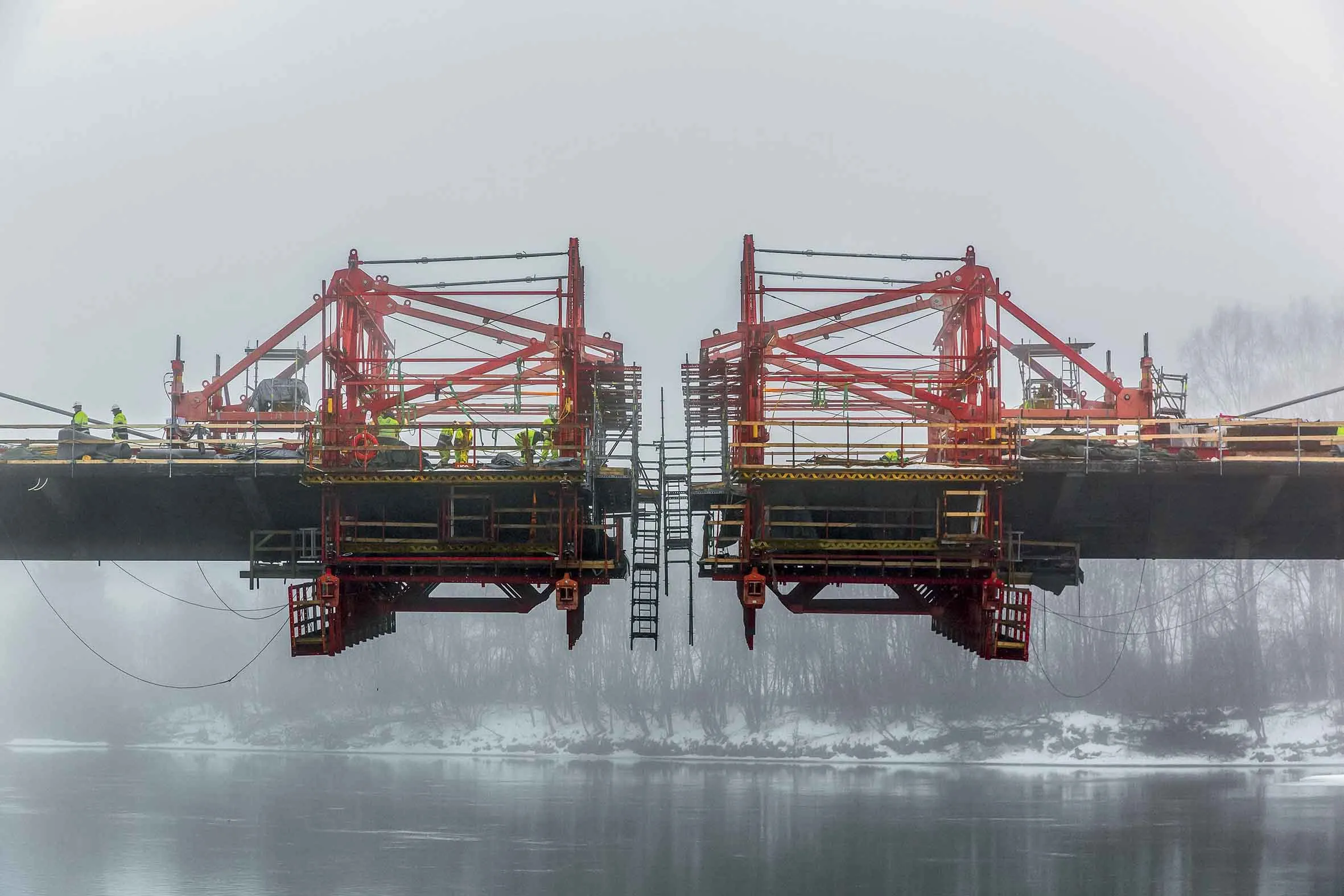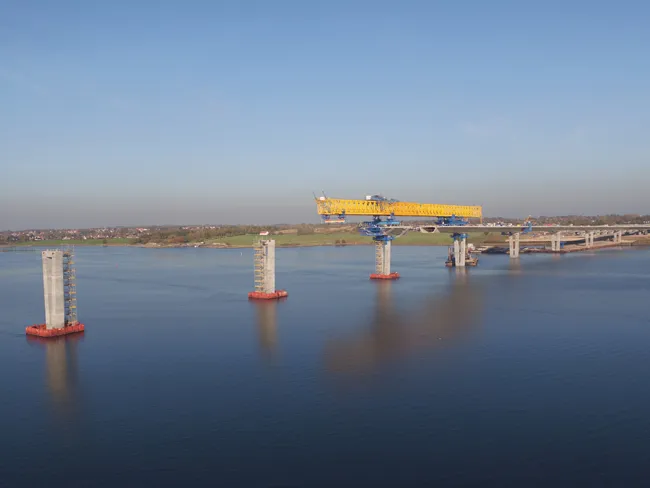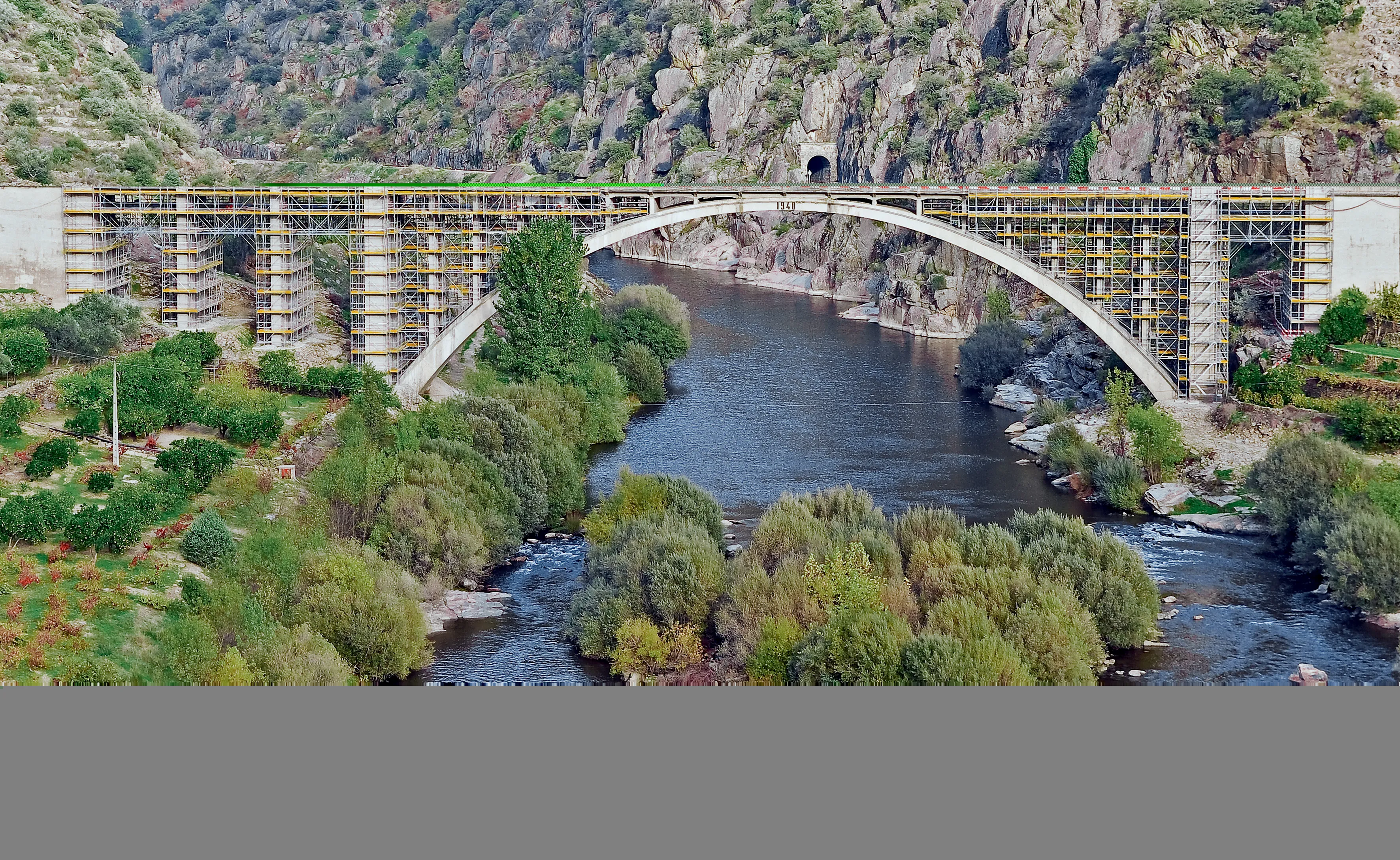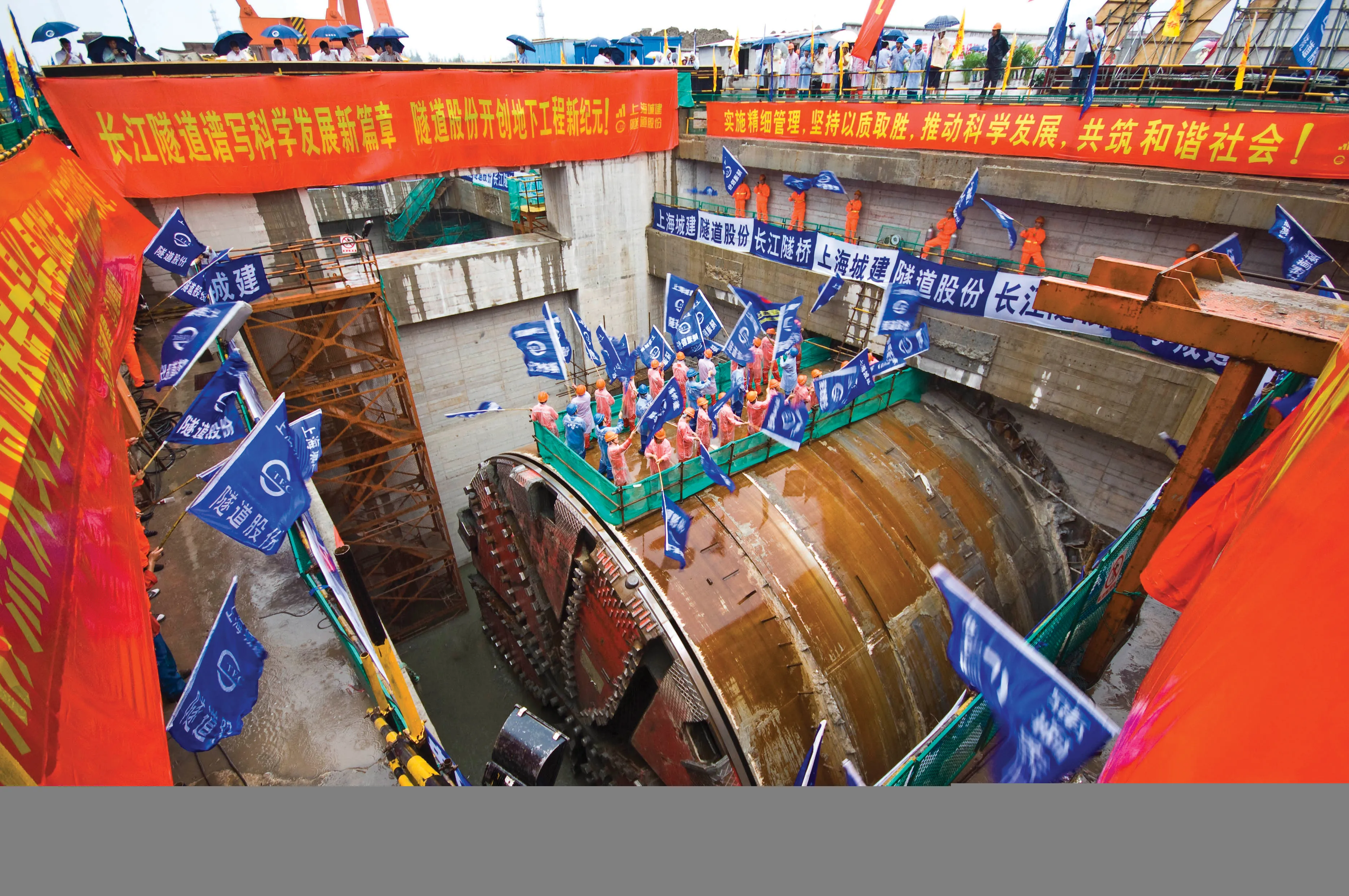Doka designed and supplied a high-performing formwork technology solution for a challenging bridge project south of the German town of Halle. The 8,614m long single-cell box girder superstructure of the Saale-Elster Viaduct, with a typical cross section width of 13.9m, is borne on 220 piers, and has a constructional depth of 4m. It is mainly being erected on launching girders to minimise the impact on flora and fauna.
February 20, 2012
Read time: 3 mins
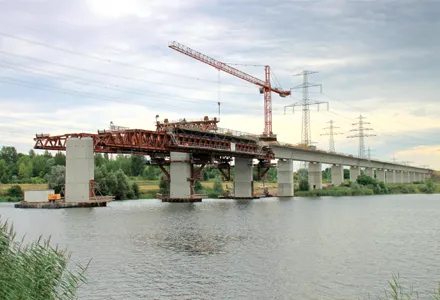
The 8,614m long single-cell box girder superstructure of the Saale-Elster Viaduct, with a typical cross section width of 13.9m, is borne on 220 piers, and has a constructional depth of 4m. It is mainly being erected on launching girders to minimise the impact on flora and fauna.
Thirty two of the piers are in ecologically sensitive areas, and to minimise their environmental impact, they are being built on shallow foundations poured inside watertight sheet-piled cofferdams. These are constructed in advance of the other operations using the over-the-top method, working downwards from the cantilevering ends of two launching girders.
In conjunction with around 1,000 stud-welded head bolts, the up to 20m deep sheet pile walls and up to 2.75m thick reinforced concrete base slabs constitute a friction-locked unit.
The project as a whole entails the expert forming of more than 140,000m³ of concrete.
"Right from the outset, the Doka formwork experts have been supporting the joint venture [
A combination of two different Doka timber beam formwork systems is being used to construct the four abutments: some of the completely factory-assembled wall formwork FF20 was fitted with extra board-type facing by the Ready-to-Use Service at Doka's Leipzig Branch to be sure of meeting the fair-faced concrete requirements.
"In addition, gangs put together from the large-area formwork Top 50 'construction kit' are ensuring excellent adaptation to the integrated bridge pier cap, and to the wall pillars which also have to be formed. Here too, the formwork units were assembled by the Doka Ready-to-Use Service and delivered to the site ready for operation. Both systems work together perfectly and complement one another seamlessly so as to ensure swift construction progress.
"In order to complete the 220 hollow piers on schedule, the jv is working with three complete sets of large-area formwork Top 50 as the starter formwork, and another five sets of climbing formwork. The perpendicular piers are rectangular in shape, with corners bevelled by 50cm. With a circumferential wall thickness of 30cm, they measure 6m in the transverse direction of the bridge and 2.7m or 3.5m in the longitudinal direction," says Doka.


